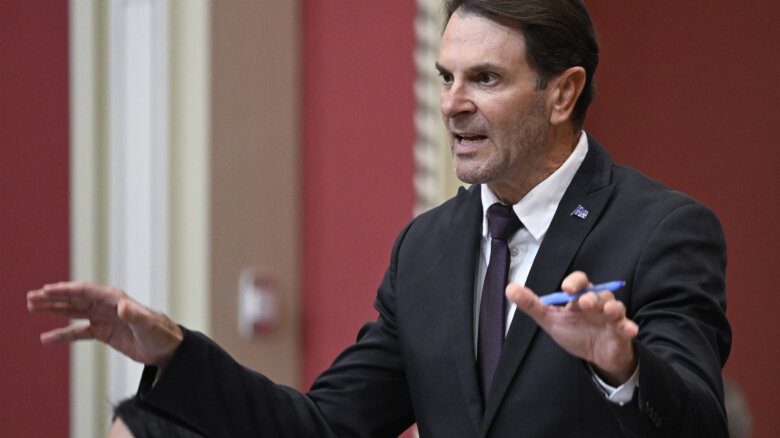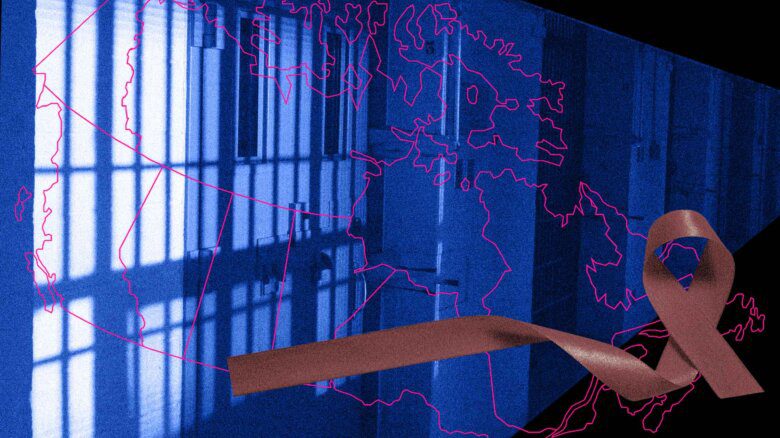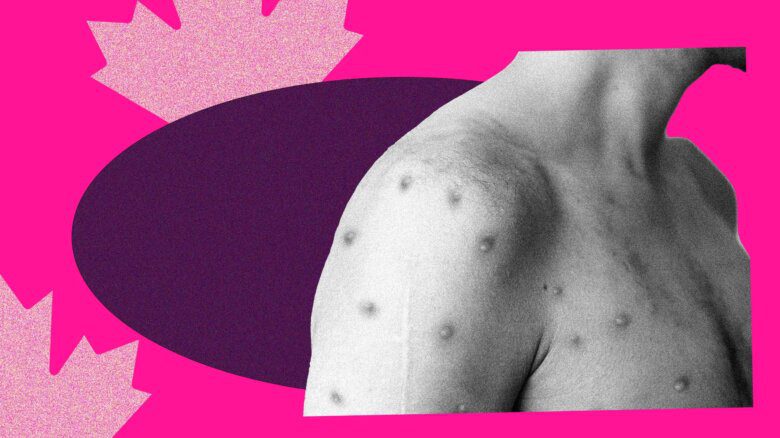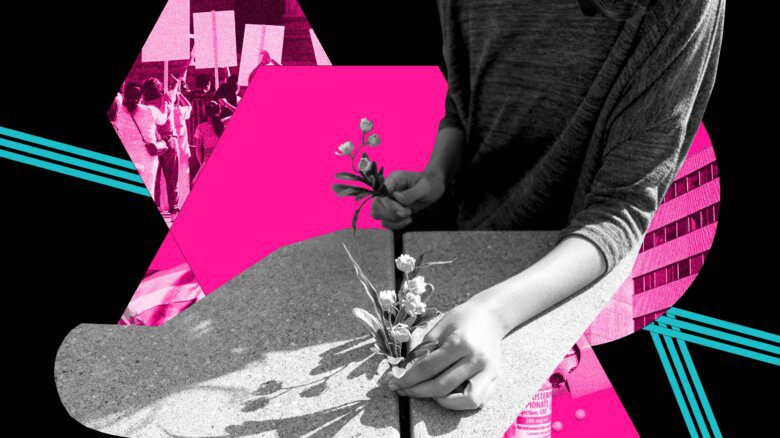While we don’t typically know when or how we’re going to die, it’s possible to be more prepared for the eventuality. Over the past several months, I’ve talked with LGBTQ2S+ people who work as lawyers, death doulas or in the funeral industry about how our communities might bring a queer spin to end-of-life planning. A common refrain in these conversations was, “Get your shit together!” While this won’t look the same for everyone, we can each find ways to make the process feel more accessible, meaningful and maybe even a little fun. Queering death is an invitation to bring creativity, self-determination, collective care and resisting oppression to how we prepare for the end of our life. It’s why I keep all my death-related paperwork in a glittery silver binder. While its contents might be serious, I want the outside to sparkle, a small nod to the femme aesthetics that are an important facet of who I am.
The phrase “end-of-life planning” means different things to different people, and can encompass a lot. When I use these words, I’m referring broadly to three things: 1) contemplating and planning for our deaths in ways that enable us to articulate our wants, needs and what matters to us; 2) having conversations with important people in our lives to help ensure that our wants and needs are known and respected; and 3) doing the necessary paperwork to help document our wishes and protect us and those we care about. This can include figuring out who you want to make healthcare decisions for you if you aren’t able to, outlining the kinds of care you do and don’t want to receive at end of life, knowing who you want to have take care of your kids or pets if you can’t and deciding what you want to have happen to your body and your belongings after you die. We can do this kind of planning anytime, ideally before a crisis hits.
End-of-life planning won’t guarantee any specific outcomes—as with the rest of our lives, there’s lots we can’t control about our deaths, especially if we’re also contending with our dysfunctional families of origin or cisheteronormative institutions like hospitals, hospices or funeral homes. Still, knowing what you want, having a plan and talking about it is an important way of advocating for yourself and showing love to those you’ll leave behind. Lawyer Diana Adams, executive director and president of New York-based non-profit the Chosen Family Law Center, tells me their clients often come to them with lots of practical questions that boil down to, “Am I safe? Is my family safe? Are my kids safe? How can we be safe? Can you make us safe?” Adams, a leader in supporting LGBTQ2S+, polyamorous and non-traditional families, is acutely aware of the barriers many of us face at end of life when navigating laws and policies that don’t reflect the diversity of who we are or how we form relationships. Alongside practical strategies, like writing a will or naming who you want your healthcare decision-maker to be, Adams encourages LGBTQ2S+ people to take time to figure out what we want at end of life, a process that involves giving ourselves permission to learn, think and talk about subjects that often feel off-limits, like death, money, asking for help and giving and receiving care. They describe having these conversations as a “tremendous gift” we can offer to our loved ones.
Doing this kind of planning usually involves introspection, intimate conversations and filling out paperwork. It can also be immensely personal and wonderfully queer, as in this example I found in Kathy Labriola’s book Polyamorous Elders: Aging in Open Relationships. In it, Labriola tells the story of a butch-femme couple she calls Louise and Natalie who’d been together in a polyamorous, Dominant/submissive relationship for 30 years when Natalie was diagnosed with terminal cancer. When Natalie became sick enough to enter into hospice care, she put Louise in stringent bondage one last time and told her she’d arranged for her other submissives to take turns staying with Louise in the months after Natalie’s death. They would be there to help nourish and care for Louise in her grief, as would their dominants, whose role would be to help create a sturdy container for Louise while she mourned the loss of her longtime partner and the power dynamic they’d shared for three decades. Natalie gave one of those dominants, a lawyer, the role of managing her estate so that Louise could focus on tending to her grief and keeping her small business running in the aftermath of Natalie’s death.
Louise and Natalie’s story exemplifies how specific, creative and collaborative we can be in our approach to end-of-life planning, and how this planning ahead can be an act of love for the people we leave behind. It also shows how we might draw on LGBTQ2S+ community strengths, like forming chosen families and caring for each other outside of dominant norms. Tiana Dargent, an Ottawa-based death doula and educator who facilitates LGBTQ2+ community discussions on death and dying as part of her work with Queer Community Deathcare, applies her experiences as a queer Leatherfemme to end-of-life planning. She points to how the leatherdykes she knows seek to “uplift community” with their skills, talents and energy, and how this “informs the kind of community-building that [she wants] to see for end-of-life care.” Dargent’s own polyamorous leather family is an alternative kinship model that has helped her “understand who can be supportive at the end of life,” and how each person might be supportive in ways that align with their skills and needs. Instead of defaulting to a single person like a partner or spouse as our go-to person for everything, Dargent tells me, “We can choose the person who is going to take care of our financial stuff and who is going to take care of our medical stuff. It doesn’t have to be who we would traditionally think of.” She gives the example of asking her next-door neighbour, a good friend, to be her healthcare decision-maker.
“I approach end-of-life planning as a form of self-protection. It’s a way of defining who is family to me and who I trust to make decisions on my behalf. It sure as hell isn’t the state or the people I’m related to by blood.”
LGBTQ2S+ people are among the many communities who know what it’s like to live and die in a context of laws, policies, institutions and systems not designed for us, or that are intentionally designed to exclude or eradicate us or prevent us from forming families. It’s one of the reasons I care so much about end-of-life planning. In the absence of us naming our decision-makers and sharing our wishes in advance, the state typically defaults to assigning responsibility for making decisions about our healthcare and body disposition (what happens to our body after we die) to whoever it deems our legally recognized family to be. If there’s no family to be found, the state will take on this role itself. In British Columbia, where I live, for example, there are laws on the books dictating specific hierarchies of family decision-makers for healthcare and body disposition. As someone whose family doesn’t conform to these hierarchies—I live with a partner, two co-parents and three kids in a seven-person queer family and don’t have close relationships with my few remaining biological family members—I approach end-of-life planning as a form of self-protection. It’s a way of defining who is family to me and who I trust to make decisions on my behalf. It sure as hell isn’t the state or the people I’m related to by blood.
Catherine Wong, a Vancouver-based family lawyer whose practice focuses on fertility law, the trans community and polyamorous families, encourages LGBTQ2S+ people to think about both the legal protections we might have access to and the social and practical realities we’re grappling with when planning for end of life. “For example,” Wong says, “the more estranged you are from your family members, the more important I think it is for you to have a will, a health representation agreement and a power of attorney.” She emphasizes that these documents can be beneficial to people in all kinds of circumstances, though the added legal protections they offer can be especially helpful to LGBTQ2S+ people with reasons to “subvert the narrow definitions” of family often enshrined in law. A lot of us fall into this category. This would apply if you’re unpartnered, practising solo poly or your most committed intimate relationships are with your friends. You might have multiple partners or a long-distance date whom the state wouldn’t recognize as your decision-maker(s). It might be crucial to do everything in your power to prevent the family you were born or adopted into from having any say in what happens to you at the end of your life. This is often a concern for LGBTQ2S+ people who are estranged from their families and for trans and non-binary people who need safeguards in place to ensure their gender identities are respected in the context of their end-of-life and funeral care.
Even though we know it’s important, it can feel intimidating and emotionally charged to begin planning for end of life, or like a tedious bureaucratic task that can wait until later. As a result, a lot of us tend to avoid or delay doing it. According to recent surveys by LegalWills.ca and Caring.com, just over a third of people in Canada and the U.S. report having an up-to-date will, though the number of younger people with wills is increasing. A 2021 U.K. survey by end-of-life charity Marie Curie found that only 40 percent of people had talked to someone about what they wanted to happen to their body after they die, and just 14 percent had had conversations about what their health and care preferences would be if they were facing serious illness or death. I get it: we’re often so busy with the pleasures and challenges of living that we don’t feel like we have the time or capacity to plan for our deaths, and the process can feel confusing, inaccessible or unaffordable. So how might we do it in ways that feel accessible, meaningful and enlivening to us and where could we begin?
Inside the Queering Death series…
1. Xtra senior editor, politics, Tara-Michelle Ziniuk interviews series writer Zena Sharman on the scope of the series, introducing readers to the topic and upcoming themes
2. We live queer lives, and thus should die queer deaths. Find out what exactly this means, and about some of the people who have already done so.
3. End-of-life planning doesn’t have to be the beige and bureaucratic; it can be “wonderfully queer,” and we explain how.
4. The death care industry wasn’t created for us, our families or our relationships—but we can take matters into our own hands and away from these institutions.
5. It might sound taboo, but it is possible to bring pleasure and eroticism into the end stages of life. And why not increase queer joy whenever we can?
6. Dominant narratives of grief don’t suit our realities, so let’s turn them on their heads and figure out what grief looks like from an LGBTQ2S+ perspective.
Tasha Fierce, a Pasadena, California-based transition doula who supports people through life transitions, including end of life, invites us to treat preparing for our deaths as an ongoing practice. Fierce considers every transformation to be “a small death,” whether it’s “the death of a way of being, shedding a skin or becoming something new.” We go through these transformations all the time, like when our identities shift with a coming-out process, or we change jobs, go through a breakup, become disabled or receive a new diagnosis. Fierce invites us to use these times of transformation to think about what’s important to us, what we want to carry with us in the end, and what we want to shed or let go of. In their doula practice, they encourage people to start thinking about their legacy early, helping them move through whatever transition they’re going through while “considering how their actions are impacting the collective, family, friends, the larger community and the earth itself.”
As a community, LGBTQ2S+ people are skilled at understanding and articulating who we are and what we care about, navigating systems not designed for us, maximizing pleasure while reducing harm and forming networks of care and kinship to help us survive. These are all skills and knowledge that can be applied to end-of-life planning—even if you haven’t thought about this stuff before, you’re starting from a place of strength. As for how to do it, I wish I could give you an easy, three-step guide to super queer end-of-life planning. The tricky part is that aspects of this are specific to the country and state, province or territory where you live. It’s also a highly personal process, one grounded in your identities, values, relationships, context, current priorities and the support and resources you have access to.
To help you get started, here are some personal and practical questions to reflect on.
Is there anything I feel worried about or afraid of when it comes to end of life?
Typical approaches to end-of-life planning don’t seem to account for the fact that many LGBTQ2S+ people need to protect ourselves and the people we love from the harms we might experience at the hands of the state, the healthcare system, the funeral industry or our families of origin. This sometimes means approaching end-of-life planning from an offensive stance by taking action to know and protect our rights as a way of helping to ensure our wishes and desires are understood and respected. Actions you could take include researching the applicable laws and policies in your province or state to help you understand how to protect your rights and identity before and after death, appointing a healthcare decision-maker, writing a will that outlines who’s in charge of your body and your funeral after you die and documenting and communicating your healthcare and after-death wishes to the important people in your life. For trans and non-binary people, this might include explicit direction about gender-affirming care and continuing transition in a context of hospice and palliative care and taking steps to ensure that the people who care for you at end of life or as part of your funeral care know what name, pronouns and gender markers to use for you, as well as what kinds of clothing you feel happiest and most like yourself in.
Who are the most important people and relationships in my life? Who do I want to be taken care of after I’m gone, or if I’m unable to care for them?
Your answers to these questions can be helpful in thinking through who you want at your side when things get rough and in what ways you want them to be there for you—along with who you might want to keep far away. Your answers can also help you figure out who you need to make sure is taken care of after you’re gone, like your kids, other adults you care for, your pets or your plants. It’s important to put plans in place to ensure their needs are met by people you trust, especially if you’re worried about estranged family members, institutions or the family-policing system putting the loved ones you care for at risk of harm. You can also draw on tools like pod mapping, a way of conceptualizing and strengthening our relationships of accountability and support that emerged out of transformative justice and has since been applied to a range of contexts, including the end of life. Disability justice and transformative justice writer and activist Mia Mingus points to pod mapping as a way of envisioning who will care for us during life transitions like a death or a loss. She offers ideas for building our pods, too, since not everyone already has a robust web of support in place.
Is there anything I want to make sure to keep safe, private or protected after I die?
After we die, our whole material and digital lives end up in other people’s hands, so it can be helpful to think about who you trust to tend to the parts that might feel more personal or private. For example, who do you want to be in charge of sorting through your sex toys after you die? What about the passwords for your hookup and fetish site accounts and profiles? You might also want to think about personal papers like diaries or journals, private photographs or videos, drugs and harm reduction supplies, confidential information about clients or customers, or anything else that you’d like specific people to tend to—or not see at all—after you die.
What are the things that matter to me and bring me joy, pleasure and meaning?
Your end-of-life planning process is highly personal and can be grounded in what’s most important and meaningful to you. Louise and Natalie’s story is a beautiful example of this, and our answers to these questions can guide us into a deeper understanding of what a fitting death looks and feels like to us, as well as how we want to be mourned and celebrated after we die. They can also help us in thinking through what we want our legacies to be, a form of reflection that can evolve alongside us as we shift and change throughout our lives.
Something surprising that I’ve learned from doing my own end-of-life planning is that it enables me to live more fully in the present, with deeper awareness of what’s most important to me. I also feel a little safer knowing that my partner has all of my end-of-life paperwork filed safely in the silver glitter binder I put together for them. I made my partner a matching one, too. It’s a physical embodiment of the love I feel for them and the rest of my chosen family, and a way of putting that love into words and action.
Definitions of key terms and end-of-life planning resource guide
How can I appoint someone to make healthcare decisions on my behalf if I’m unable to?
The terminology and paperwork for this varies depending on where you live.
If you live in Canada, this person might be called your substitute decision-maker, medical proxy, health representative or agent or power of attorney for personal care.
- The Canadian Virtual Hospice has resources for LGBTQ2S+ people on choosing a substitute decision-maker as part of their Proud, Prepared, Protected website.
- The Canadian Virtual Hospice has information on the different terms and forms used across the country to help you figure out the requirements in your province or territory.
- You can also find helpful resources through Advance Care Planning Canada.
If you live in the U.S., this person might be called your healthcare proxy, healthcare agent, power of attorney for healthcare or surrogate decision-maker.
- The U.S-based Conversation Project has resources on choosing a healthcare proxy.
- The U.S. National Hospice and Palliative Care Association has a website where you can download and complete your state or territory’s advance directive form.
- AARP also has a state-by-state list with links to these forms.
How can I appoint someone to carry out my funeral wishes after I die?
If you live in Canada, you might consider writing a will that names someone as your executor and gives them the responsibility for making your funeral arrangements. If you don’t have a will, you’ll die “intestate” and these responsibilities may automatically fall to those legally deemed as your next of kin or, in some circumstances, the state.
If you live in the U.S., this blog post on designating a funeral agent may be a helpful place to start, as may this page from the Funeral Consumers Alliance outlining who has the legal right to make decisions about your funeral. It includes a list of state-by-state requirements.
Next up: Like many other systems, the death care industry wasn’t created with queer and trans people in mind—find out how we can take matters into our own hands and have control over our death practices.
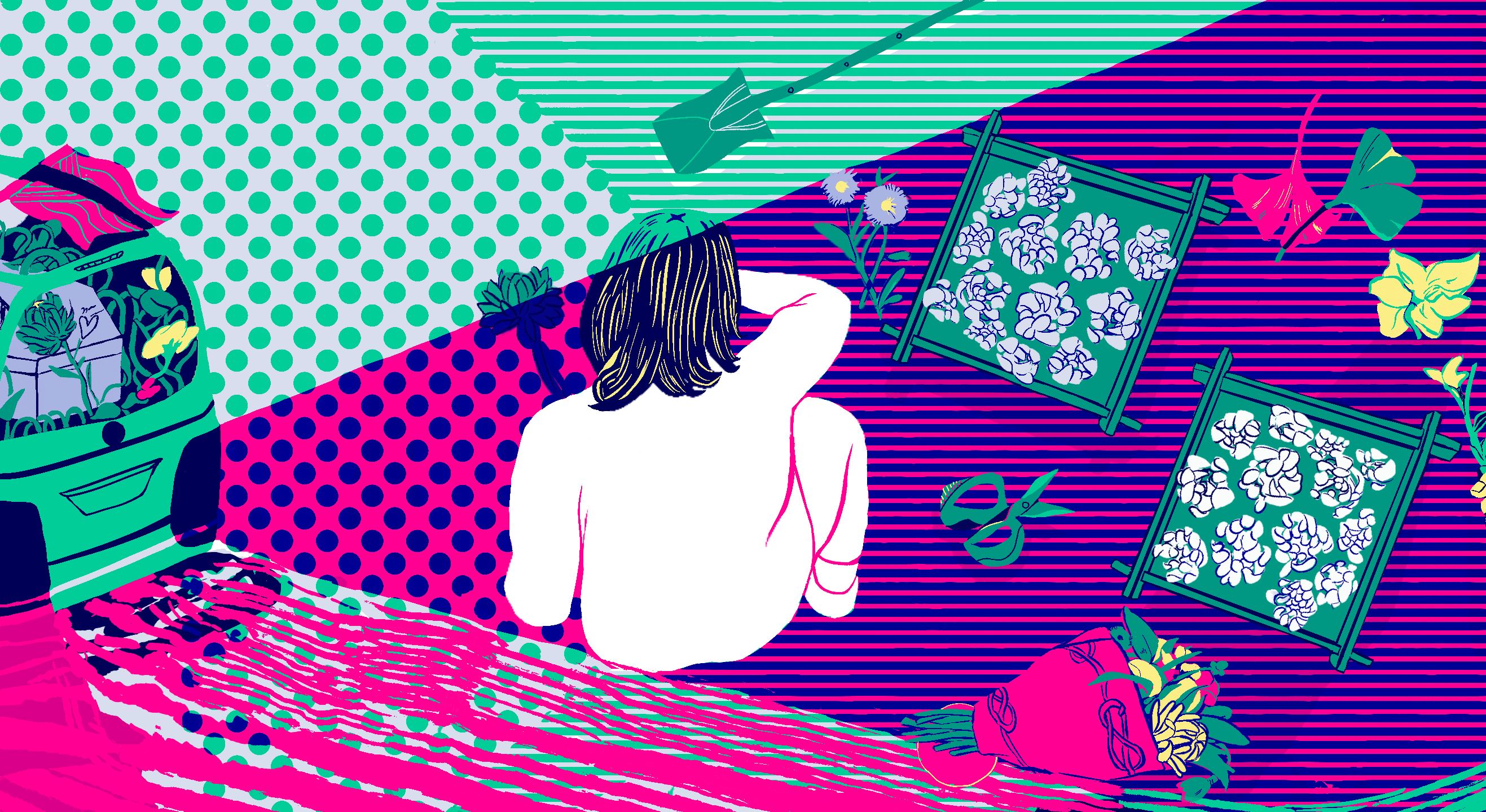

 Why you can trust Xtra
Why you can trust Xtra